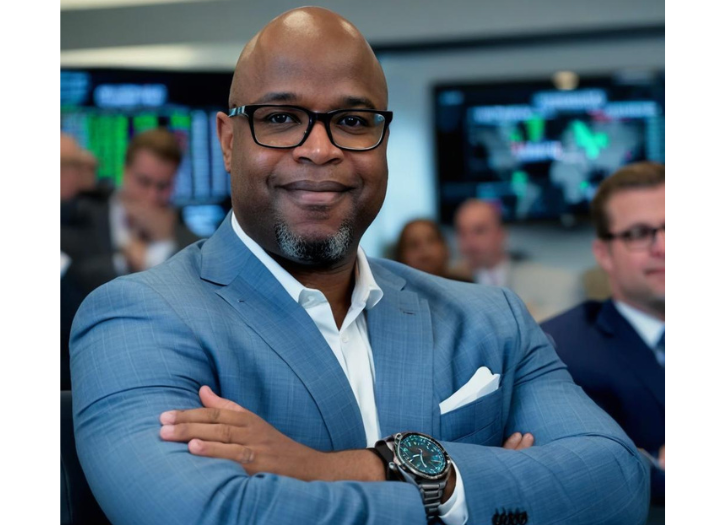It’s time to disrupt the outdated models of leadership development and embrace a new, more effective approach.
In boardrooms and classrooms around the world, leadership training has become a multi-billion dollar industry. Companies invest heavily in workshops, seminars, and certification programs, all in the name of developing their next generation of leaders. But there’s an inconvenient truth that many are too polite—or too scared—to admit: Most of this training is useless.
That’s right. I said it. And it’s time we stopped pretending otherwise.
The Leadership Training Illusion
Traditional leadership training is built on a flawed foundation. The premise is simple: gather a group of employees, walk them through a series of modules on communication, team dynamics, and decision-making, and voilà—out comes a fully formed leader, ready to inspire and guide teams to success.
But let’s be honest. How many times have you attended one of these workshops, only to find that the moment you step back into your office, the real-world demands quickly drown out whatever nuggets of wisdom you picked up? How often does the “leadership blueprint” you were handed in a seminar truly equip you for the messy, unpredictable reality of leading people?
The truth is, leadership isn’t something you can learn in a few hours, a few days, or even a few weeks. Leadership is forged in the fire of experience. It’s a journey, not a destination, and one that can’t be mapped out with cookie-cutter templates and one-size-fits-all advice.
The Problem with Traditional Training
The fundamental problem with traditional leadership training is that it’s too theoretical. It’s designed to tick boxes rather than solve real problems. You sit in a room, absorb concepts, engage in role-playing exercises, and complete assessments that tell you what kind of leader you’re supposed to be. But none of this addresses the core challenges that real leaders face: the sleepless nights, the tough decisions, the pressure to deliver results while keeping your team motivated and engaged.
These programs often fail to acknowledge the personal nature of leadership. They don’t account for the fact that every leader’s journey is unique, shaped by their experiences, challenges, and inner drive. True leadership isn’t about fitting into a mold—it’s about breaking it. It’s about knowing when to go against the grain, when to trust your gut over the ‘proven strategies’ everyone else is following.
The Fixed Mindset Trap
Let’s dive a little deeper into why traditional leadership training often falls flat. At its core, much of this training is rooted in a Fixed Mindset—a belief that leadership qualities are innate, fixed traits that can be polished but not fundamentally altered. This mindset creates a dangerous illusion: that leaders are born, not made. It convinces people that if they don’t naturally fit the leadership mold, they never will. And that’s where the entire concept of leadership training fails us.
A Fixed Mindset breeds complacency. It tells leaders that they’ve arrived, that they are ‘enough’ just as they are, and that any further growth is unnecessary. This couldn’t be further from the truth. In reality, the best leaders are those who are constantly evolving, who see every challenge as an opportunity to grow, and who understand that leadership is a skill—one that requires continuous development.
The Power of a Growth Mindset
Enter the Growth Mindset—the antidote to the Fixed Mindset trap. A Growth Mindset recognizes that leadership is not a static quality but a dynamic one. It’s about believing that you can develop your abilities, that you can learn from every failure, and that your potential as a leader is limitless.
Leaders with a Growth Mindset are the ones who thrive in the face of adversity. They don’t shy away from challenges; they seek them out. They understand that every failure is a stepping stone to success, that every setback is an opportunity to come back stronger. And this is the mindset we should be fostering in our leaders.
Traditional leadership training rarely, if ever, encourages this kind of mindset. Instead, it often presents a series of ‘best practices’ that are to be followed without question. It teaches leaders to fit into predefined roles rather than encouraging them to create their own. But real leadership is about innovation, disruption, and the courage to challenge the status quo—not just in the business world but in the way we train our leaders.
Breaking the Mold: A New Approach to Leadership Development
So, what needs to change? How do we move from outdated, ineffective models of leadership development to a new approach that truly prepares leaders for the challenges of today’s world?
First, we need to shift our focus from teaching leadership to experiencing it. Leadership development should be immersive, hands-on, and tailored to the individual. It should push people out of their comfort zones, exposing them to real challenges where they can test their mettle and learn from failure. You don’t learn to lead by sitting in a classroom—you learn by leading.
Imagine a leadership program where the ‘curriculum’ is a live business challenge—a real problem that needs solving, with real consequences if you fail. Imagine being thrown into a situation where there’s no script, no safety net, just you and your team figuring out how to navigate through uncertainty. That’s where real leaders are made.
Second, we need to embrace the idea that leadership is deeply personal. It’s not about adopting someone else’s style or following a prescribed path. It’s about understanding your own strengths, weaknesses, and motivations—and using that self-awareness to guide your actions. This means leadership training should be as much about introspection as it is about skill-building.
Developing Emotional Intelligence
A key component of this introspective approach is the development of Emotional Intelligence (EI). Traditional leadership training often overlooks this critical aspect, focusing instead on technical skills and strategic thinking. But ask any successful leader, and they’ll tell you: leadership is 90% emotional intelligence. It’s about understanding your own emotions, managing them, and using that understanding to navigate interpersonal relationships effectively.
Leaders with high emotional intelligence are more empathetic, better communicators, and more effective at managing conflict. They inspire trust, foster collaboration, and create environments where people feel valued and motivated. In short, they are the leaders people want to follow. This is what we should be focusing on in our leadership development programs—not just how to be a good manager, but how to be a great leader who connects with and inspires their team.
Cultivating Resilience
Another critical quality that traditional leadership training often fails to develop is resilience. The ability to bounce back from setbacks, to keep going when things get tough, is what separates good leaders from great ones. Yet, most leadership programs don’t teach resilience. They don’t prepare leaders for the inevitable failures, rejections, and challenges that come with the territory.
Resilience isn’t just about toughness—it’s about adaptability. It’s about being able to pivot when things don’t go as planned, to find new solutions when old ones don’t work, and to maintain your focus and drive even in the face of adversity. Leadership training should focus on building this kind of resilience, teaching leaders not just to survive challenges but to thrive in them.
Leadership as a Way of Life
Ultimately, we need to shift our mindset about what leadership really is. Leadership isn’t just a role you step into when you walk into the office—it’s a way of life. It’s about how you carry yourself in every aspect of your life, how you treat people, how you make decisions, and how you navigate the world.
Traditional leadership training often compartmentalizes leadership, teaching it as something you do in a professional context, separate from your personal life. But the truth is, how you lead in your personal life is just as important as how you lead in your professional life. The principles of leadership—integrity, empathy, resilience, courage—are not just workplace skills; they are life skills.
A New Vision for Leadership Development
So, what does the future of leadership development look like?
First and foremost, it’s personal. It’s about developing leaders who are self-aware, emotionally intelligent, and resilient. It’s about fostering a Growth Mindset, encouraging leaders to see challenges as opportunities, and failures as stepping stones to success.
Second, it’s experiential. Leadership isn’t something you learn in a classroom—it’s something you learn by doing. The future of leadership development is hands-on, immersive, and real. It’s about putting leaders in situations where they have to think on their feet, adapt to changing circumstances, and make tough decisions.
Finally, it’s holistic. Leadership development should focus not just on professional skills but on personal growth. It should teach leaders how to lead in every aspect of their lives, how to integrate their personal values with their professional goals, and how to inspire and motivate others by being authentic and true to themselves.
The New Face of Leadership
We’re at a crossroads. The old models of leadership development are no longer sufficient for the challenges of today’s world. We need a new approach, one that recognizes the complexity of leadership and the importance of continuous growth and adaptation.
The new face of leadership is here. It’s bold, it’s innovative, and it’s ready to challenge the status quo. It’s not about fitting into a mold—it’s about breaking the mold. It’s about leading with conviction, with empathy, and with a relentless drive to grow and improve.
If you’re serious about developing leaders who can truly make an impact, it’s time to rethink how you’re doing it. Stop relying on outdated, ineffective models of the past. Instead, embrace a new vision for leadership development—one that’s as dynamic, personal, and challenging as the role of leadership itself.
Because at the end of the day, leadership isn’t about what you know—it’s about what you do. And the only way to truly learn how to lead is by stepping into the fire, facing the challenges head-on, and emerging stronger on the other side.
Follow Mick: LinkedIn Instagram Twitter YouTube
Photo Credit: Courtesy of TOM ESTEY PUBLICITY & PROMOTION







Add Comment